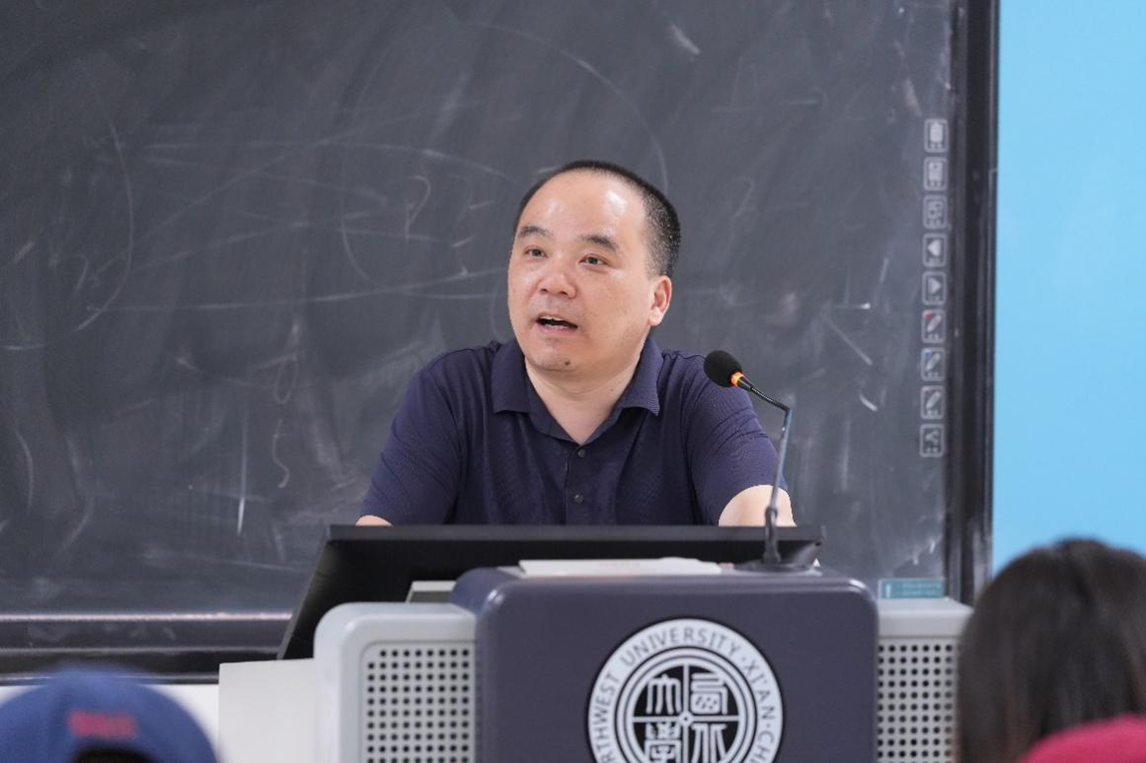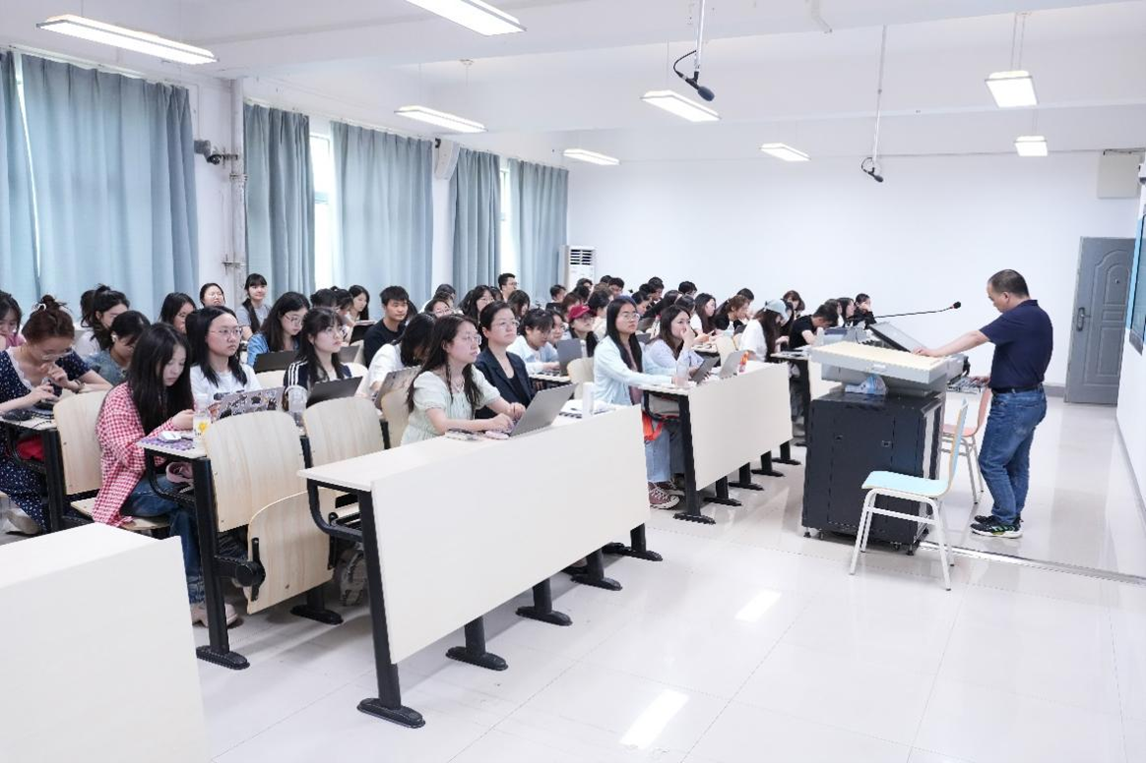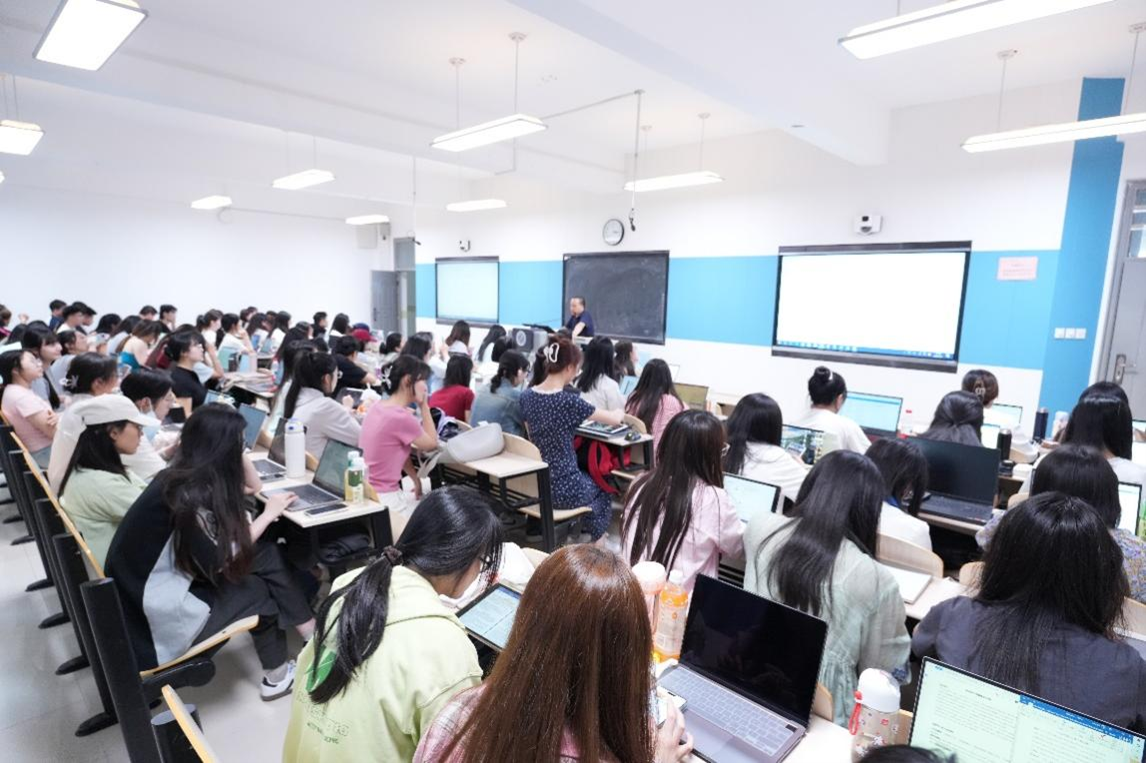On the afternoon of May 7, 2025, Mr. Peng Lifeng, Senior Product Manager at Transn Internet of Languages Technology Co., Ltd., was invited to deliver a special lecture to the Class of 2024 MTI (Master of Translation and Interpreting) graduate students. The lecture, titled Research on the Application of Intelligent Translation Technology in Pre-translation, In-translation, and Post-translation Processes, took place in Room 6409 at our Chang’an campus. The focus of the lecture was on the application and practical use of intelligent translation technology throughout the entire translation process. Associate Professor He Hua, the director of our MTI center, hosted the session and began by introducing Mr. Peng’s professional background and experience. The students warmly welcomed Mr. Peng to the lecture.
At the beginning of the lecture, Mr. Peng introduced mainstream translation models such as Wenxin Yiyan, Kimi, Doubao, and DeepSeek, demonstrating the key role of machine translation in improving translation efficiency, including tasks such as terminology extraction, corpus alignment, mind map generation, and image text extraction. Using Doubao and DeepSeek as examples, he showcased the standardized process for terminology management, providing step-by-step demonstrations of the terminology extraction process through specific instructions and comparing the results generated by the two models, thus presenting the complete terminology extraction workflow. Mr. Peng also explained in detail the methods for aligning bilingual and monolingual corpora, revealing the technical logic of machine translation in semantic understanding and cross-language conversion by showing the effects of different models on segment alignment. To address the need for structured presentation in translation projects, he recommended using tools like Markdown AI, Coze, and TreeMind for mind map generation, explaining the value of these tools in knowledge visualization and structuring thought processes. Additionally, Mr. Peng used an example of Japanese text images to demonstrate how AI tools can quickly and accurately extract text. The lecture also focused on the Cloud Translation Platform (Yun Yike), providing an in-depth analysis of its translation functions and usage methods from the perspectives of project management, quality control, and collaborative translation. He emphasized the technological advantages of the platform in automating translation processes and standardizing version management.
In the Q&A session, students engaged in in-depth discussions with Manager Peng on cutting-edge topics and translation practice challenges. For example, one student raised the issue of “standardizing prompt word templates.” Manager Peng emphasized that writing prompts should adhere to the principles of “clarity of task, standardization of format, and refinement of parameters,” and that instruction strategies should be flexibly adjusted according to different models. When asked about the “skills required for translator recruitment,” Manager Peng stressed that translators must not only be proficient in computer-assisted translation tools and familiar with localization processes, but also possess interdisciplinary knowledge and critical thinking skills. He recommended that students continuously enhance their overall competencies through fragmented learning and project-based practice.
This lecture deeply integrated the theoretical concepts of artificial intelligence technology with the practical realities of the translation industry. It systematically presented the application of intelligent translation technologies throughout the entire translation process. Through theoretical explanations and practical case analyses, it strengthened students’ machine translation thinking and hands-on abilities. The lecture provided practical guidance for master’s students in translation on areas such as translation practice, tool usage, and career development. It also introduced cutting-edge technological concepts and industry-standard processes, which are helpful in improving students’ translation project management capabilities. This has significant implications for cultivating versatile translation talents who can adapt to the trends of the new era, assisting students in navigating industry changes, and helping them gain an advantage in their future careers.
Written by: Tan Huan
Reviewed by: He Hua


